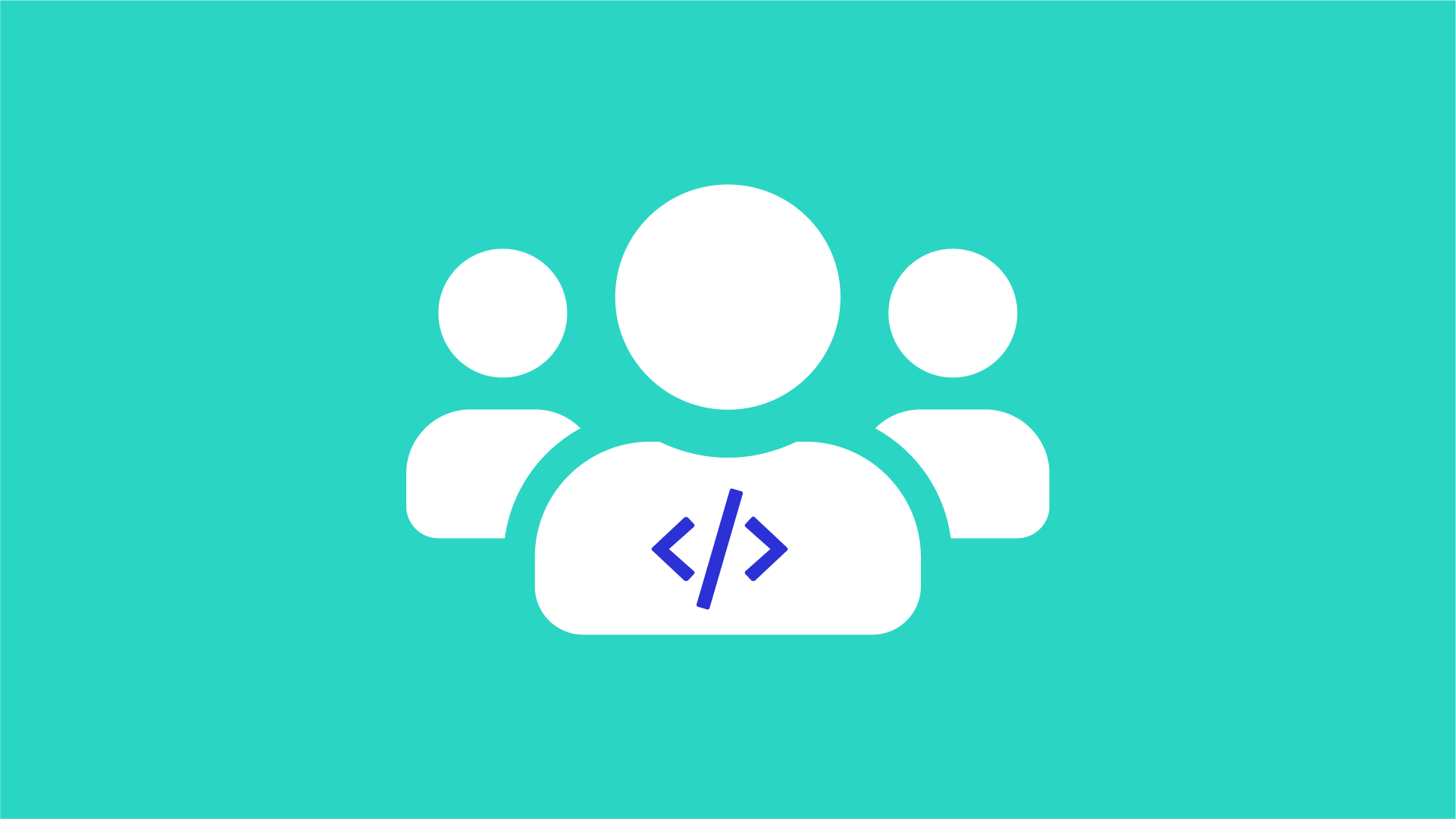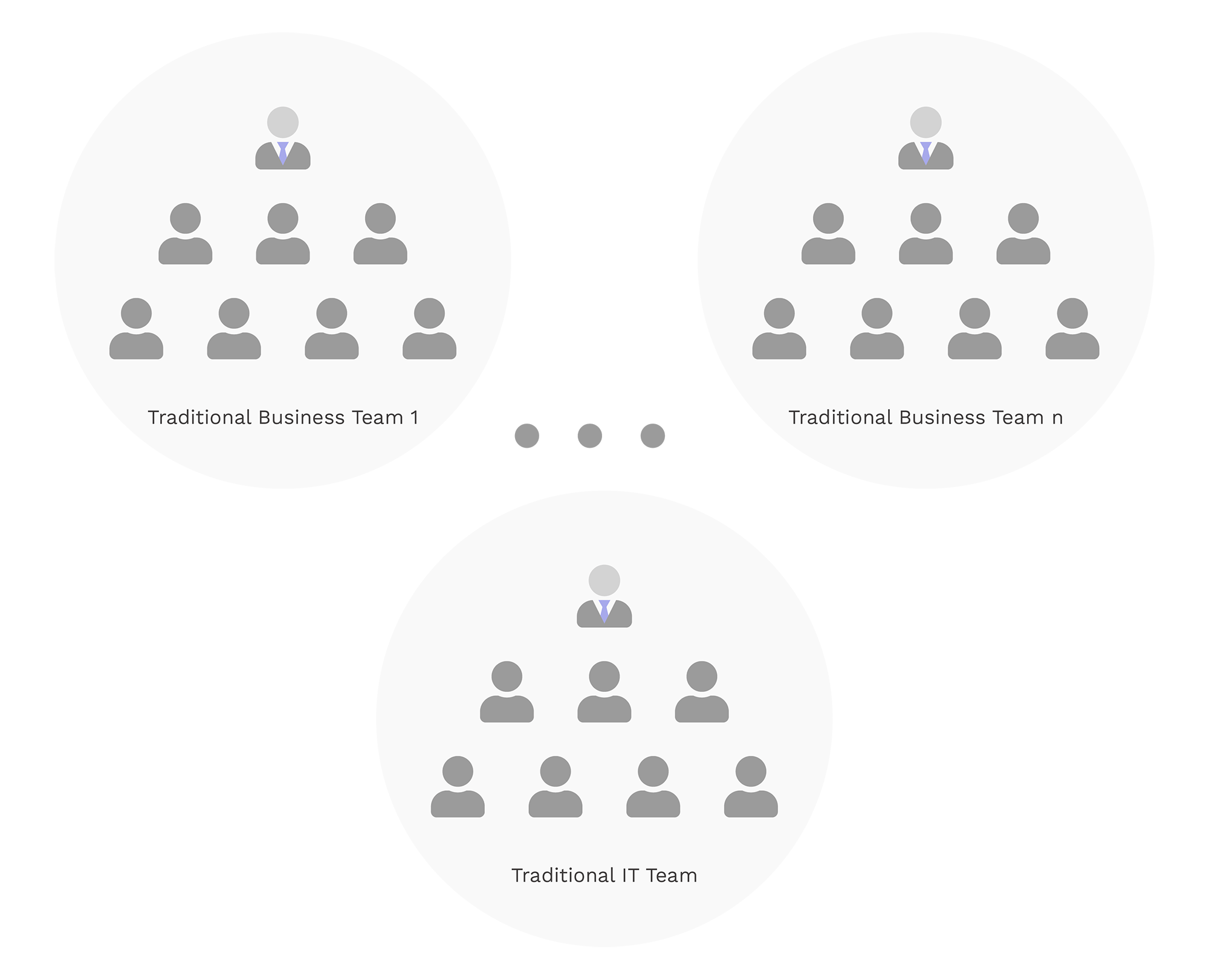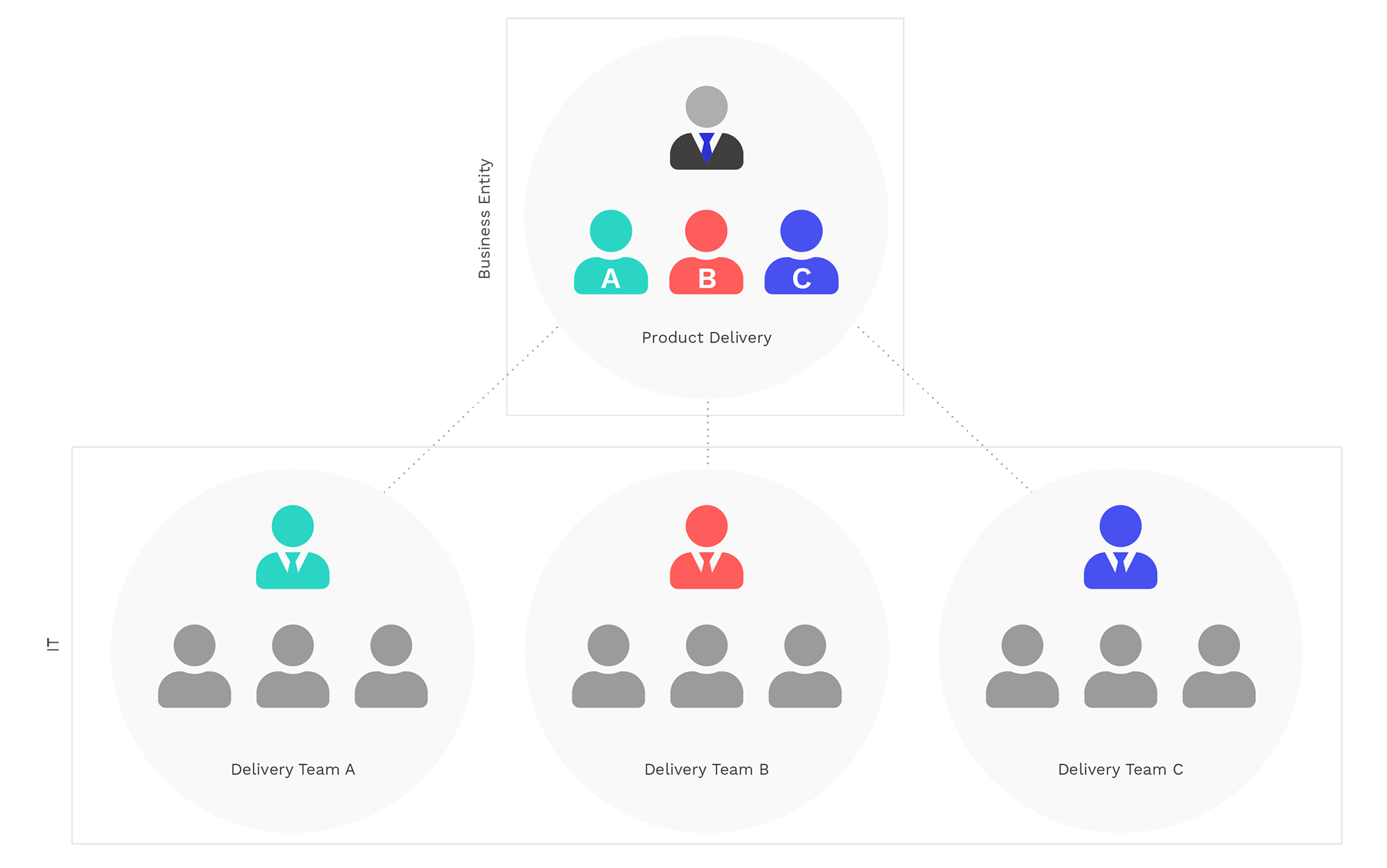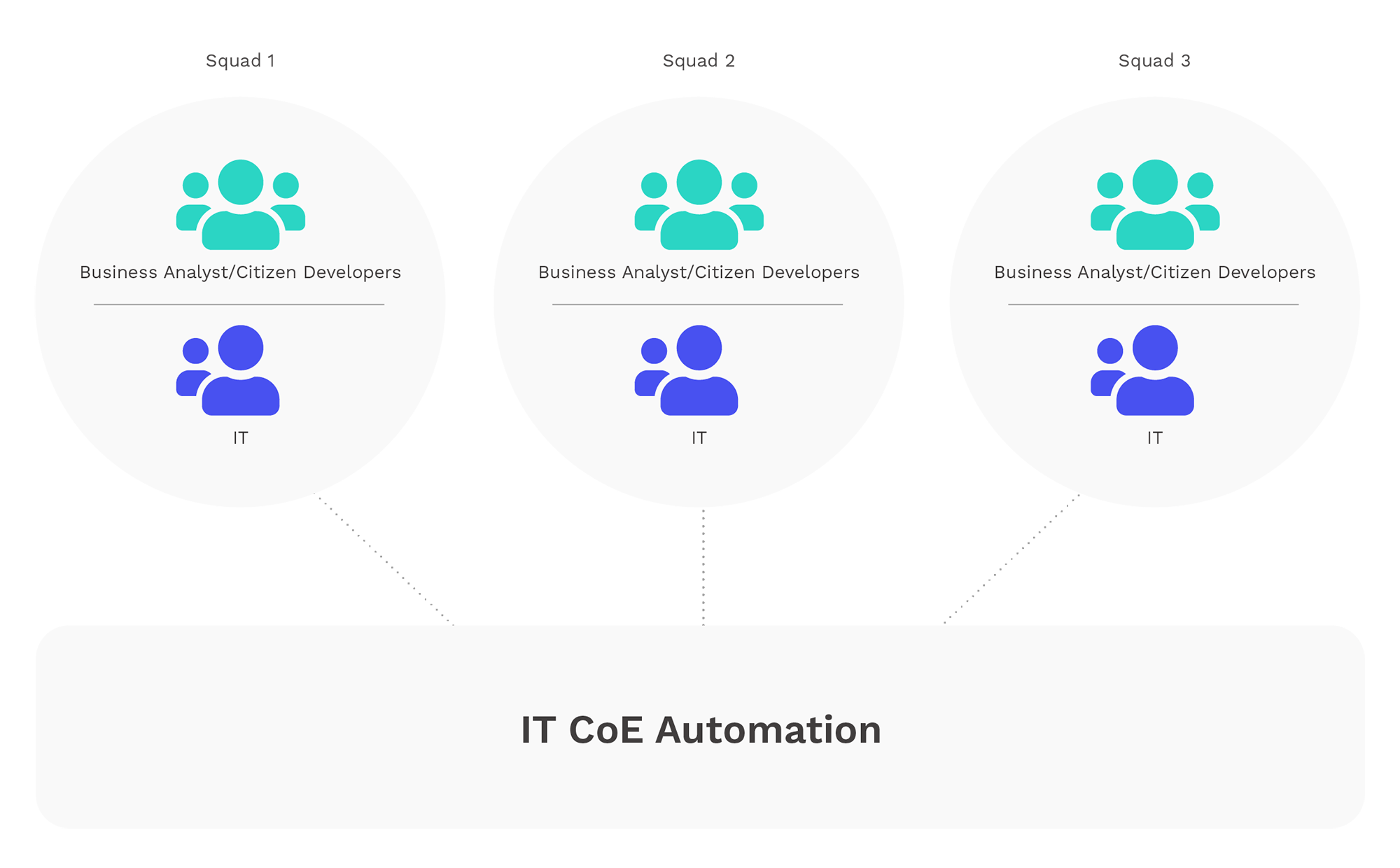Citizen Developers: How Diverse Users Power Smart Solutions


If you work in finance, insurance, or healthcare, you likely don’t think of yourself as a technologist.
This is despite the fact that half of all major capital investment since the 1980s has gone to information technology adoption. According to a 2020 report by the World Economic Forum, 85% of executives at global financial institutions are already using some form of Artificial Intelligence (AI) to power their business. 77% of those surveyed expect AI will become essential to their businesses within 2 years. Healthcare and insurance see similar trends.
With technology adoption so ubiquitous and monotonically increasing, it’s easy to assume vast engineering manpower for implementation. But as many business teams discover, projects and integration often hit a bottleneck at IT. The IT department is triaging highly specialized requests from hundreds of individuals and teams across your enterprise, and IT is often under-resourced and overwhelmed with delivery deadlines.
So enterprises often end up asking the age-old, fraught question: to build or to buy?
When in-house production straggles along, it’s tempting to hit the buy button. There are enticing pros:
But there are so many cons, which is probably why you’ve hesitated before making an enterprise-grade technology purchase. It goes without saying that the solution is not customized to your unique needs. Making the necessary changes is its own saga. Purchased solutions can cost a pretty penny, putting a serious dent in your ability to make other, necessary purchases. And at the end of the day, you’re force-fitting a generic technology that all your competitors potentially have access to.
For business teams, there’s an inherent lack of choice in these calculations, and a new shift in who gets to design and build solutions is rendering the above narrative moot.






Traditional hierarchies and organizational structures have been eroding steadily, even in the most conservative industries. As diverse businesses have realized the benefits of distributed decision-making - agility, innovation, and long-term growth - the idea that one department should have exclusive domain over technology implementation is outmoded and retards progress.
Buy versus build is predicated on overburdened internal IT against sleek, but generic outside solutions. What if business teams could not only design solutions, but actually build them?
Enter low-code software, the citizen developer, and decentralization to enable quick, customized, internally created technology that scales.
As Agile methodologies have proliferated to non-technical teams, so too has the idea of the citizen developers. Citizen developer is a team-agnostic term that highlights the trend of non-programming-focused teams using software tools and infrastructure to serve their needs.
Citizen developers, by nature, create organically. In biology labs, where this technique was pioneered, many grad students have extended visual integrated development environments (IDE) to create tools highly specific to their projects and experiments. At the enterprise-level, citizen developers can rapidly relieve pressure on the IT department, by executing on problems themselves. Within the IDE, citizen developers can use drag & drop modules, connecting them strategically to develop unique applications.
This distribution of technology creation and implementation work implies that the problem, the business constraints, and the typical end user are innately aligned; that’s a significant advantage over relying exclusively on the IT department for tool development.
What does a low-code or no-code framework mean? As software evangelists realized that more and more, it was the business teams who were the driving force behind features and solutions, a clear barrier presented itself.
Enterprise teams that lacked coding proficiency were locked out of execution. Low-code architecture was developed so that a lot of the tortuous, repetitive software could be modularized in blocks (akin to APIs). Business teams, with little to no programming knowledge, could then use these blocks to develop solutions for themselves.

As Agile methodologies have proliferated to non-technical teams, so too has the idea of the citizen developers. Citizen developer is a team-agnostic term that highlights the trend of non-programming-focused teams using software tools and infrastructure to serve their needs.
Citizen developers, by nature, create organically. In biology labs, where this technique was pioneered, many grad students have extended visual integrated development environments (IDE) to create tools highly specific to their projects and experiments. At the enterprise-level, citizen developers can rapidly relieve pressure on the IT department, by executing on problems themselves. Within the IDE, citizen developers can use drag & drop modules, connecting them strategically to develop unique applications.
This distribution of technology creation and implementation work implies that the problem, the business constraints, and the typical end user are innately aligned; that’s a significant advantage over relying exclusively on the IT department for tool development.
That’s not to say that teams will run amok, stealing each others’ functions and accidentally duplicating projects.
While the citizen developer may exist in situ, creating a sustainable and scalable environment where teams across the enterprise can contribute requires planning and coordination. The IT department would spearhead the creation of these communities by creating compliance and security guardrails. While business users, for example, can create their own customer journeys, IT would focus on establishing the enterprise architecture, developing integrations between systems of records, and providing oversight and training to any business user who wants to use a low-code platform.






Communities of citizen developers are the antitheses of siloed, rigid teams; with enough of the right connections made, these developer communities can accelerate development across the organization and create knowledge and tool repositories for the next generation of teams.
Importantly, the presence of citizen developer communities can rapidly up the rate of a company’s digital transformation. According to Forrester Research, they have the potential to make software development 10 times faster than the current IT-only model.
Does this all sound a bit amorphous, like tech jargon? Citizen developer communities already exist when it comes to insurance and conversational AI.
Ushur, a Silicon Valley tech firm that seeks to change the conversation around conversational AI, is already enabling business team users in the insurance and finance industries to build their own workflow automations, like chatbots, service desks, and mail triage, through its low-code, plug & play platform.
Ushur has designed solutions built around democratization, specifically enabling business teams to build software germane to them, with minimal IT involvement. For example, insurance business teams have been able to build out solutions around unique challenges such as First Notice of Loss (FNOL) and claims processing, to allow their members to send and receive information over digital mediums of their choice, at their convenience. These solutions are replete with sophisticated artificial intelligence that allows providers the ability to engage customers across a spectrum of needs with the same technology.
Better still, this AI is packaged in low-code, business friendly software. The modules are strung together in a visually simple, aesthetic environment over a web browser, and developer tools consist of easy-to-access libraries of features that form the building blocks. Business teams that are trained on Ushur can execute tools within mere days, without having to turn to IT. The platform is industry-agnostic; the same architecture has been used by finance-, healthcare-, and insurance-focused teams to drive customer engagement, eliminate repetitive administrative tasks, and reduce operational load and costs.
While enterprise software typically falls exclusively within the IT domain, Ushur builds explicitly with citizen developers in mind. The agility with which these teams can turn ideas into reality means more opportunities, faster, for the companies that foster these communities.
After all, what’s that old sales adage? The customer knows best. In this case, that’s the business team, and now, the customer can execute on that knowledge.